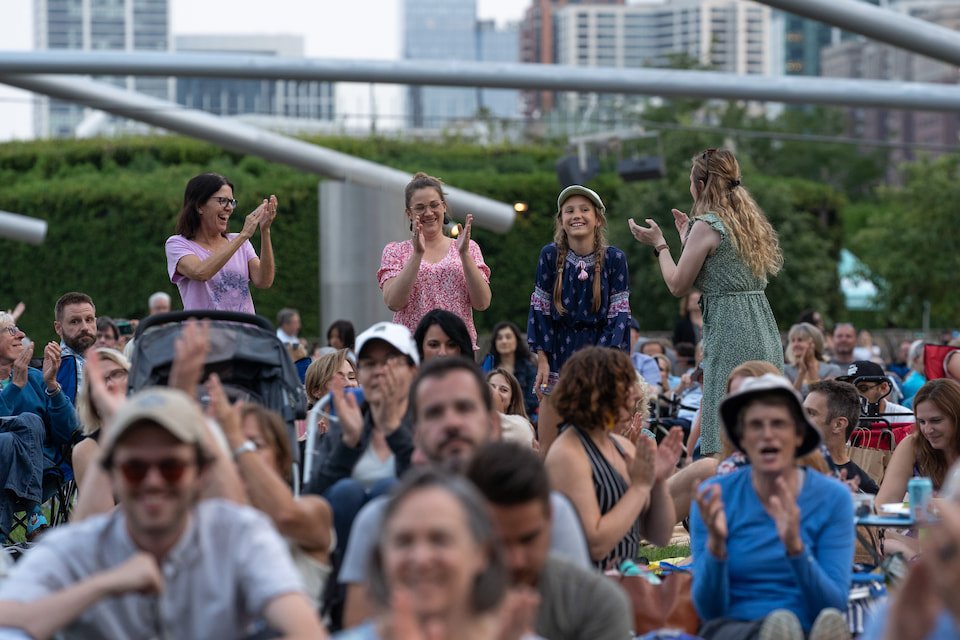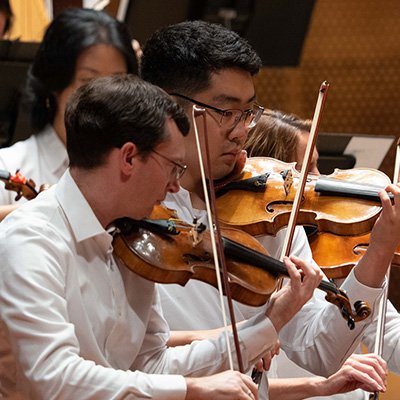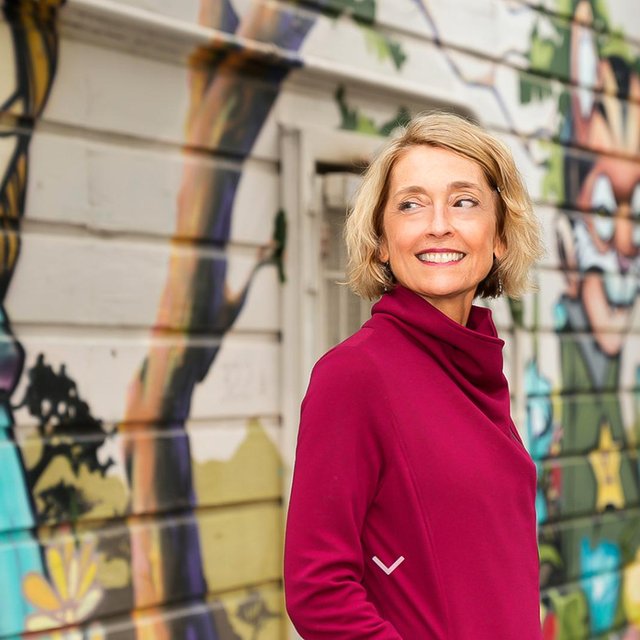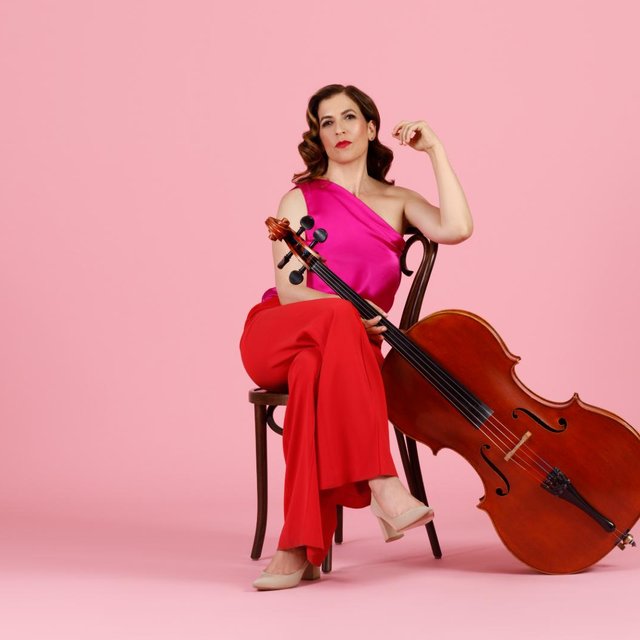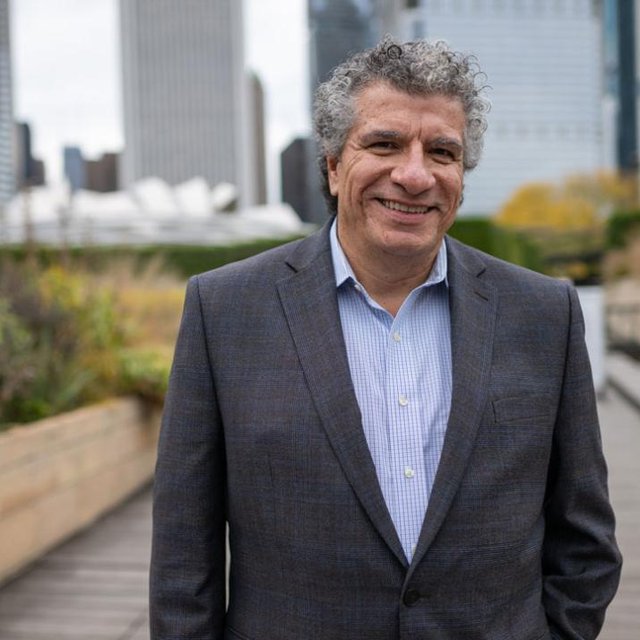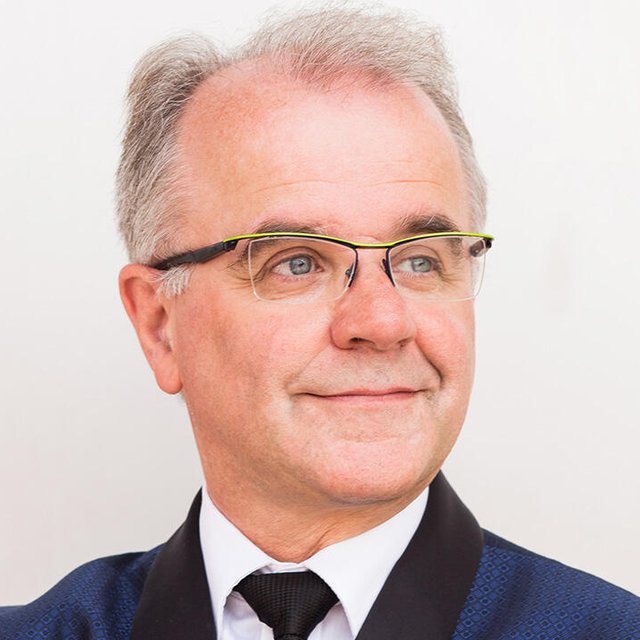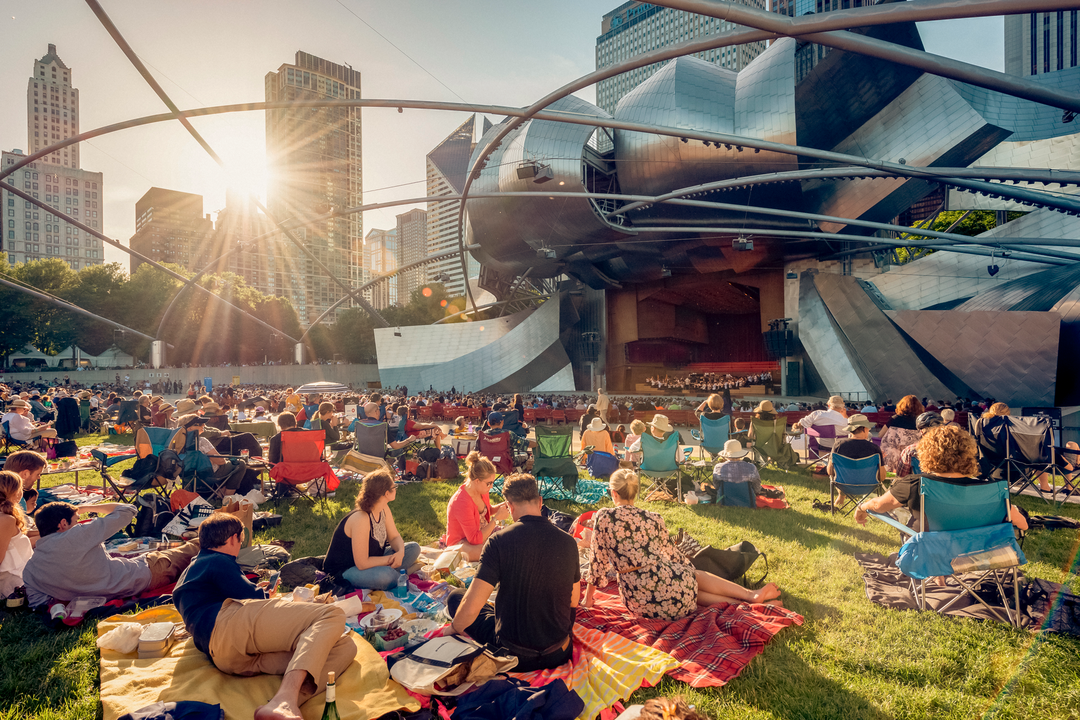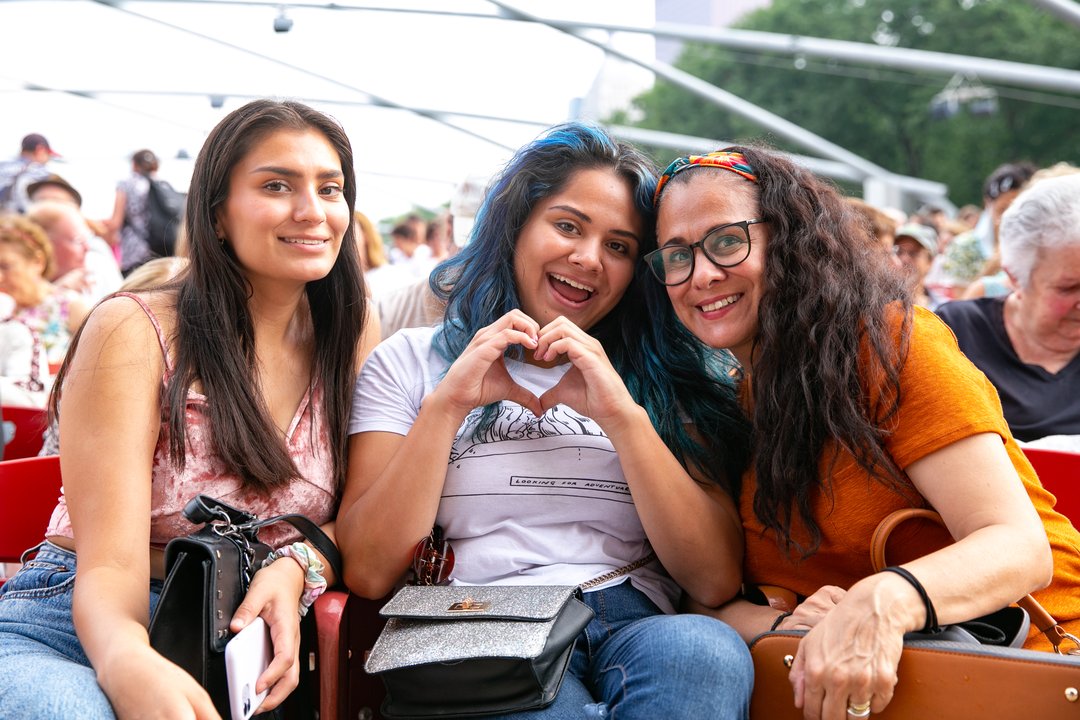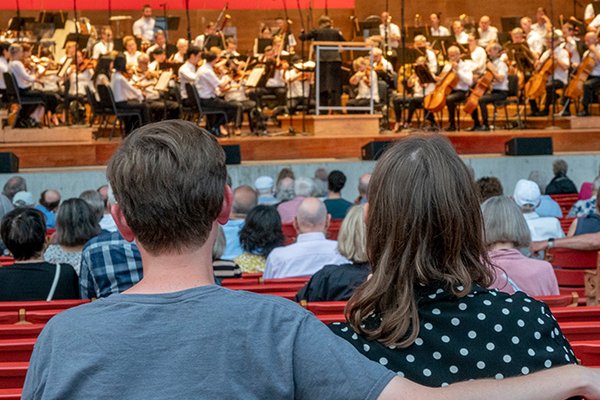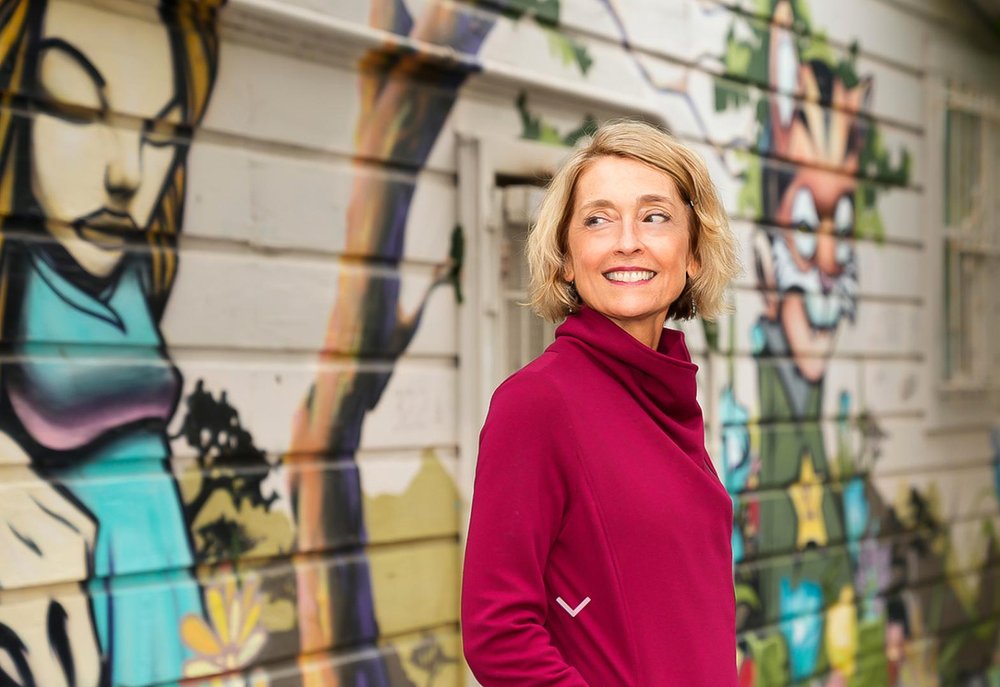
Debussy La Mer
Program
Bedřich Smetana The Moldau (12 mins)
Mark Adamo Last Year (25 mins)
Autumn: Dismissing Eunice
Winter: Le Triangle Noir
Spring: Zephaniah 1:14-15
Summer: For Julia, born 2045
Claude Debussy La mer (23 mins)
From Dawn to Noon on the Sea
Play of the Waves
Dialogue of Wind and Sea
Featuring
Program Notes
Bedřich Smetana (1824–1884)
Vltava (The Moldau), from Má vlast (1874)
Scored for: three flutes including piccolo, two oboes, two clarinets, two bassoons, four French horns, two trumpets, three trombones, tuba, timpani, percussion, harp, and strings
Performance time: 12 minutes
First Grant Park Orchestra performance: July 2, 1935; Eric DeLamarter, conductor
Alongside Antonín Dvořák, Bedřich Smetana is recognized as a seminal figure in the development of a Czech national musical style. Although he grew up speaking German and spent five years in Sweden, Smetana became committed to the ideas of Czech nationalism. In the 1860s, he began composing specifically “Czech” music, focusing on Bohemian themes and incorporating folk styles as an essential element of his musical language.
Smetana’s cycle of six symphonic poems, Má vlast (My Fatherland), is a prime example. Each tone poem depicts an element of the history, landscape, and traditions of Bohemia in what he called “musical pictures of Czech glories and defeats.” He began composing the work in 1874, shortly after resigning from his post as principal conductor of the Prague Provisional Theatre. Increasing deafness and tinnitus that was the result of syphilis had made conducting impossible. Nevertheless, he continued to compose, completing the suite that would become one of his most enduring works over the next five years. Ultimately, he lost his eyesight as well, and hallucinations and self-destructive behavior led to his institutionalization in a Prague asylum, where he died in 1884.
The second tone poem, Vltava (The Moldau), is the most famous of the cycle. It traces the journey of the Moldau River from its source in the Bohemian Forest to where it joins the Elbe. On its way, the river flows through fields and forests, past hunters and a peasant wedding, by river nymphs dancing in the moonlight, and down the rapids of St. John before majestically opening into a broad stream as it enters the city of Prague. Smetana musically paints the rolling waters of the river with a Wagnerian leitmotif before layering a broad folk tune on top. The melody may stem from a 16th-century Italian song called “La Mantovana,” which has spread throughout Europe in different guises (even forming the basis of the Israeli national anthem, “Hatikvah,” via Romania). While the melody’s origins may not be Bohemian, Smetana’s posthumous reputation as the father of Czech music, combined with the work’s popularity, has made Vltava an unofficial anthem of the Czech Republic.
Mark Adamo (b. 1962)
Last Year (2019)
Scored for: timpani, percussion, harp, strings, and solo cello
Performance time: 25 minutes
First Grant Park Orchestra performance
While Mark Adamo is best known for his work as an opera composer and librettist—with his debut opera, Little Women (1998), standing as one of the most performed American operas today—he has recently turned his hand to symphonic, choral, and chamber works. Mark Adamo began composing Last Year in 2018 in response to Hurricane Harvey. He had been listening to a recording of Vivaldi’s Four Seasons at the time and pondered what Vivaldi would write if he were alive today, confronted with the reality of climate change. In writing this piece, Adamo said he attempts to “give voice to the fears and hopes we experience during this moment of crisis.”
Instead of a cycle of four concertos for solo violin, Adamo scores his work as a concerto in four movements for solo cello, adding harp, piano, and percussion to the sonority of the string orchestra. Like Vivaldi’s cycle, each movement bears the title of a different season but also a subtitle. The first movement, “Autumn: Dismissing Eunice,” invokes Eunice Newton Foote, an American climatologist who, in 1856, was the first to scientifically prove what we now refer to as the greenhouse effect. The movement begins with a fanfare that alternates uneasily between major and minor. Adamo weaves in a theme from Vivaldi’s Autumn in what he calls a “polymetric scherzo of nervous and glittering character” interrupted by tolling chords in the percussion choir.
“Winter: Le triangle noir” refers to an ice storm in January 1998 that left an area south of Montreal without power for several weeks. The media nicknamed the area “The Triangle of Darkness.” Here, Adamo captures the eerie stillness of a landscape encased in ice with a hushed theme, as strains of Vivaldi murmur underneath. Again, the percussion choir interrupts, but this time with a clear statement of the Gregorian “Dies Irae” chant. This acts as a warning knell for the third movement, “Spring: Zephaniah 1:14–15,” which proceeds without pause. The bible verse alluded to in the title warns of the coming of the day of judgment—a day of wrath and destruction. The theme from Vivaldi’s Spring alternates in fast and slow iterations. Eventually, the orchestra erupts into a thundercloud of sound before evaporating to reveal the soloist serenely sustaining a note underneath.
“Summer: For Julia, born 2045” again continues without a break. In this movement, Adamo envisions a barren landscape emptied of everything but low bass notes and the cries of seagulls. Even amid this bleakness, the cello is determined to be hopeful. “But—even as the orchestra takes up and develops, harmonically, that determined theme—the solo cello cannot help, for a moment, but lose itself in recrimination,” Adamo writes. “Memories of chaos, and that opening premonition, return to haunt the final moments: but the cello maintains the last word.”
Claude Debussy (1862–1918)
La mer (1903)
Scored for: three flutes including piccolo, three oboes including English Horn, two clarinets, four bassoons including contrabassoon, four French horns, five trumpets, three trombones, tuba, timpani, percussion, two harps, celesta, and strings
Performance time: 23 minutes
First Grant Park Orchestra performance: July 28, 1965; Irwin Hoffman, conductor
“My old friend the sea; it is always endless and beautiful,” Claude Debussy mused. “It is really the thing in nature which best puts you in your place.” Debussy had a lifelong affinity for the sea. As a child, he spent his summers at the shore in Cannes, and at one point, he had a mind to become a sailor. Throughout his life he had accumulated enough memories of the ocean that he did not need to be on the waterfront to compose La mer. Like the English painter J. M. W. Turner, Debussy worked from memory. To Debussy, memories were more useful for composing than reality, “whose beauty weighs down thought too heavily.”
Turner’s seascapes served as a direct inspiration for Debussy after he saw an exhibition of the English artist’s paintings while on a trip to London in 1903, the year he began writing La mer. Turner anticipated the French Impressionist movement in his study of light, color, and atmosphere. His dynamic seascapes capture fleeting moments of the ever-changing sea as it reflects the sun and catches the wind. Debussy sought to channel this aesthetic in music in La mer. However, where music surpasses painting, Debussy said, was in its ability to “bring together all manner of variations in color and light as they continually change in time.”
Although there is plenty of precedent for musical depictions of water, Debussy was original in his impressionistic approach to La mer, a work he described as “three symphonic sketches.” In contrast with Smetana’s Vltava, which charts the Moldau’s exact course with distinct scenes along the way, Debussy’s evocation of water is more nebulous, though no less effective. Like the sea, musical ideas and colors constantly shift as if viewed through a kaleidoscope. Short melodic snippets are favored over long-drawn-out thematic development, and harmonies do not necessarily resolve but are used as color. Debussy’s groundbreaking orchestration also plays a role in achieving his desired effect. He blurs the traditional divisions of labor between the strings, winds, and brass and puts them in unique combinations to achieve specific colors. Any doubling is done with the utmost intention, as Debussy considered timbre a musical element of equal stature to harmony and melody.
While La mer is more suggestive than narrative, it is easy to imagine the scenes Debussy sketches in each movement. In “De l’aube à midi sur la mer” (“From dawn to midday on the sea”), the seascape gradually emerges from the mist at dawn. The sun peeks over the horizon in a melody in the cor anglais and muted trumpet, and the sea begins to swell. Later, a horn chorale sounds as the sun reaches its apex at noon. “Jeux de vague” (“Play of waves”) is even more spontaneous, capturing the waves shimmering in the sun in its rhythmic, melodic, and harmonic irregularities. The sea gathers strength in “Dialogue du vent et de la mer” (“Dialogue between the wind and the sea”). A turbulent storm brews, with surging waves and battering winds, while the eye of the storm brings an uneasy moment of calm. The “symphonic” aspect of the work reveals itself at the end in the recollection of the horn chorale of the first movement, this time in full brass.
—Katherine Buzard
Event Sponsors
The appearance of Nicole Paiement is generously underwritten by Lori Julian for The Julian Family Foundation.
Artistic Leadership
Support The Festival
Violin I
Jeremy Black, concertmaster
Vacant, assistant concertmaster
Trista Wong
Zulfiya Bashirova
Jennifer Cappelli
Injoo Choi
Dima Dimitrova
Erica Hudson
Hyewon Kim
Matthew Lehmann
Jayna Park
Rika Seko
Karen Sinclair
Bonnie Terry
Krzysztof Zimowski
Violin II
Liba Shacht, principal
Vacant, assistant principal
Ying Chai
Ran Cheng
Karl Davies
Likai He
Ann Lehmann
Laura Miller
Cristina Muresan
Kjersti Nostbakken
Irene Radetzky
Jeanine Wynton
Thomas Yang
Viola
Terri Van Valkinburgh, principal
Yoshihiko Nakano, assistant principal
Elizabeth Breslin
Beatrice Chen
Amy Hess
Rebecca Swan
Chloé Thominet
Cello
Walter Haman, principal
Peter Szczepanek, assistant principal
Calum Cook
Larry Glazier
Steven Houser
Eric Kutz
Eran Meir
Double Bass
Colin Corner, principal
Peter Hatch, assistant principal
Andrew Anderson
Christian Luevano
Samuel Rocklin
Chunyang Wang
Chris White
Flute
Vacant, principal
Alyce Johnson
Jennifer Lawson, assistant principal
Piccolo
Jennifer Lawson
Oboe
Mitchell Kuhn, principal
Vacant
Anne Bach, assistant principal
English Horn
Anne Bach
Clarinet
Dario Brignoli, principal
Trevor O’Riordan, assistant principal
Besnik Abrashi
Bass Clarinet
Besnik Abrashi
Bassoon
Eric Hall, principal
Nicole Haywood Vera Tenorio, assistant principal
Vacant
Contrabassoon
Vacant
Horn
Vacant, principal
Stephanie Blaha, assistant principal
Neil Kimel
Brett Hodge
Paul Clifton
Trumpet
David Gordon, principal
Mike Brozick
Vacant, assistant principal
Vacant
Trombone
Daniel Cloutier, principal
Jeremy Moeller, assistant principal
Bass Trombone
Alexander Mullins
Tuba
Andrew Smith, principal
Timpani
Daniel Karas, principal
Josh Jones, assistant principal
Percussion
Josh Jones, principal
Vacant, assistant principal
Doug Waddell
Harp
Kayo Ishimaru-Fleisher, principal
Keyboards
Christopher Guzman
Orchestra Librarian
Eliza Bangert, principal
Grant Park Chorus
* denotes leave-of-absence † 2025 Vocal Fellow
Laura Lynch Anderson
Kristina Bachrach
Madalynn Baez
Megan E. Bell
Alyssa Bennett
Tamara Bodnar
Kylie Buckham
Anna Joy Buegel
Laura Bumgardner
Katherine Buzard
Bethany Clearfield
Nathalie Colas
Carolyne DalMonte
Megan Fletcher
Kaitlin Foley
Saira Frank
Julia Frodyma
Katherine Gray-Noon
Kimberly Gunderson
Alexandra Ioan
Alexandra Kassouf
Darlene Kelsey
Olivia Knutsen
Marybeth Kurnat
Katelyn Lee
Kyuyim Lee+
Rosalind Lee
Veronica Mak
Hannah Dixon McConnell
Marie McManama
Kathleen Monson
Susan Nelson
Evangeline Ng
Máire O'Brien
Alexandra Olsavsky
Laura Perkett
Angela Presutti Korbitz
Alexia Rivera
Veronica Samiec
Emily Sinclair
Molly Snodgrass
Tiana Sorenson
Christine Steyer
Sarah van der Ploeg*
Lydia Walsh-Rock
Sherry Watkins
Emily Amesquita
Melissa Arning
Christina Bernardoni
Angela Born
Bethany Brewer
Julie DeBoer
Leah Dexter
Katrina Dubbs
Stacy Eckert
Margaret Fox
Catarine Hancock
Ruth Ginelle Heald
Sophia Heinz
Miya Higashiyama
Carla Janzen
Amy Allyssa Johnson
Kathryn Kinjo Duncan
Amanda Koopman
Anna Laurenzo
Jeannette Lee
Thereza Lituma
Chelsea Lyons
Victoria Marshall
Jessica McCarthy
Quinn Middleman
Ella Peters
Sarah Ponder
Emily Price
Stephanie Schoenhofer
Suzanne A. Shields
Marissa Simmons
Cassidy Smith
Aidan Spencer
Alannah Spencer
Margaret Stoltz
Carolyn Sundlof Boudreau
Gabrielle Timofeeva López
Elizabeth Vaughan
Corinne Wallace-Crane
A.J. Wester
Debra Wilder
Isabel Yang+
Charles Anderson
Enrico Giuseppe Bellomo
Justin Berkowitz
Madison Bolt
Hoss Brock
Steven Caldicott Wilson
Opal Clyburn-Miller+
John J. Concepción
Micah Dingler
Jared V. Esguerra
Alec Fore
Ace Gangoso
Klaus Georg
Tejas Gururaja
Paul Hunter
Garrett Johannsen
William Johnson
James Judd
Tim Lambert
Tyler Lee
Stephen D. Noon
Marcos Ochoa
Brett Potts
Nicholas Pulikowski
Peder Reiff
Samuel Rosner
Matthew W. Schlesinger
Joe Shadday
Aaron Short
Brian Skoog
Michael St. Peter
Ryan Townsend Strand
Alan Taylor*
Sean J. Watland
Nate Widelitz
Walter Aldrich
Evan Bravos
Matthew Brennan
Michael Cavalieri
Ryan J. Cox
Ed Frazier Davis
Lifan Deng
Matthew Dexter+
Chris DiMarco
Christopher Filipowicz
Dimitri German
Dominic German
David Govertsen
Spencer Greene
Brian Hupp
Jan Jarvis
Jess Koehn
Eric Miranda
Ian Morris
Ian Murrell
John E. Orduña
Wilbur Pauley
Douglas Peters
Jackson Pierzina
Martin Lowen Poock
Ian Prichard
Dan Richardson
Stephen Richardson
Benjamin D. Rivera
Scott Uddenberg
Schyler Vargas
Vince Wallace
Aaron Wardell
Ronald Watkins
Jonathon Weller
Peter Wesoloski
Jonathan Wilson
Chuck Foster
John Goodwin
Kyuyim Lee
Isabel Yang
Opal Clyburn-Miller
Matthew Dexter
